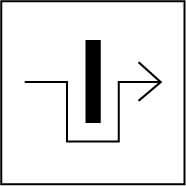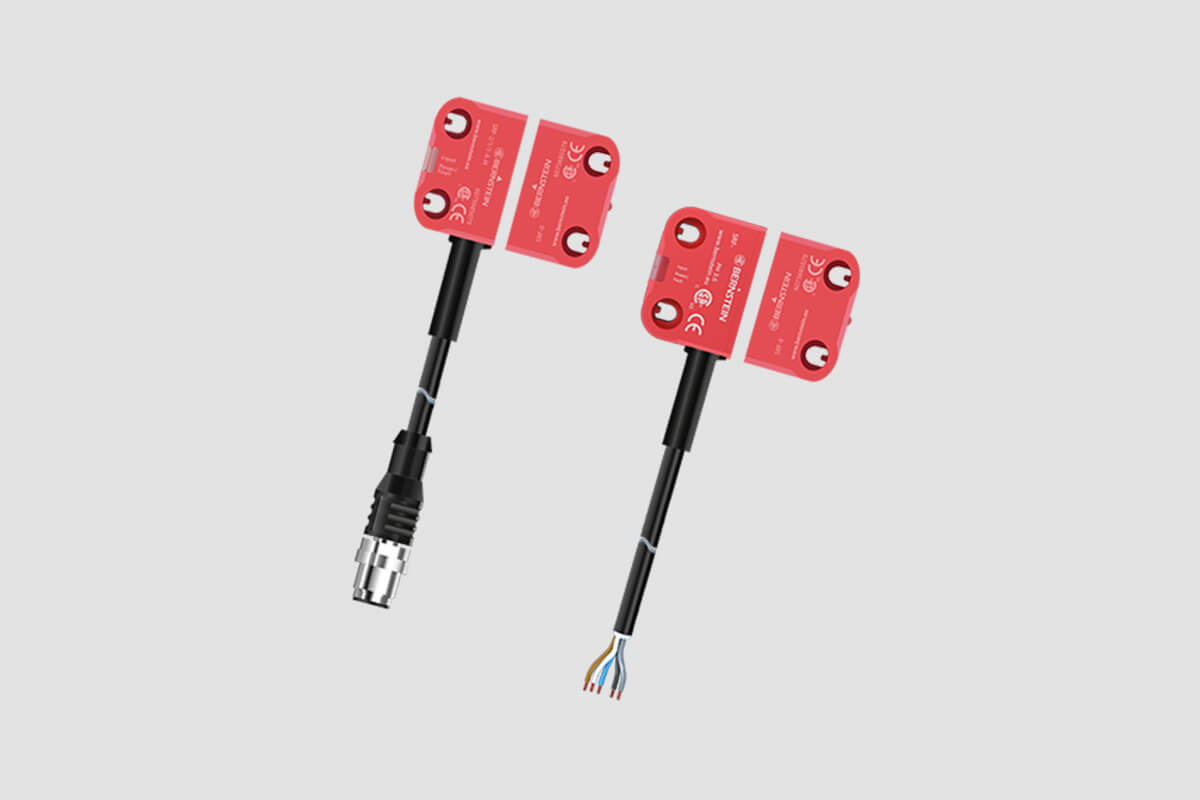The term "guard locking" is used in the field of machine safety in connection with safety doors and covers and their monitoring.
The situation is specified in more detail in ISO 14119 "Interlocking devices in conjunction with guards".
According to this standard, an interlocking device basically has the task of stopping a dangerous machine function when the guard is opened and preventing restarting for as long as the guard remains open.
Safety switch with integrated locking function
A special type of interlocking device is one with an integrated guard locking function. Its task is to mechanically hold the guard in the closed position until a safe state is reached.
The safety-related reason for using a guard locking device is to protect the machine operator from an ongoing hazard despite a stop command having been given. The safety guard is only unlocked by the control system once it has determined that the machine is in a safe state.
Guard locking functions
Important functional elements of a guard locking device are the locking mechanism, its drive and the locking mechanism monitoring.
The locking device is usually a movable bolt that blocks the safety guard. The drive for the guard locking in the locking direction is often realized by a spring; an electromagnet is then used to open the guard locking. This type of locking and unlocking is called the closed-circuit current principle / spring force locking.
In contrast, with the open-circuit principle, locking is achieved by a solenoid and unlocking by a spring. The closed-circuit current principle is mainly used in the field of safety technology. The open-circuit principle is typically used in the field of process protection.
Monitoring the functions of safe guard locking devices
The locking device monitoring is crucial for guard locking . The position of the bolt is monitored by a safety switch or sensor, which ensures that the dangerous machine function can only be performed when the guard is locked.
In the case of guard locking devices with faulty closing protection, the contacts of the locking device monitoring are marked separately.

As the locking device can only bolt the guard if it is actually closed, only these contacts need to be integrated into the safety circuit.
BERNSTEIN switch with guard locking
The picture shows a typical guard locking device (BERNSTEIN SLC) with the properties described above.
The metal head and the so-called sliding bolt, which are able to withstand high forces in the event of an opening attempt with a bolted guard, are striking.
When using a guard locking function, these contacts must be monitored in accordance with the desired performance level.
The unlocking function can also be a safety function. It must be controlled in accordance with the risk assessment.
Further variants of safety switches
Our safety switches with guard locking are available in two versions. You can also find more information in our "Safety technology" catalog.
We also offer a large selection of other variants of safety switches and sensors for a wide range of applications in our product portfolio.






